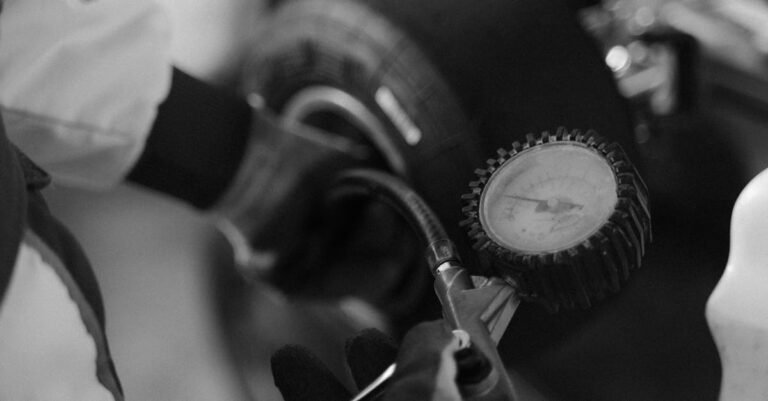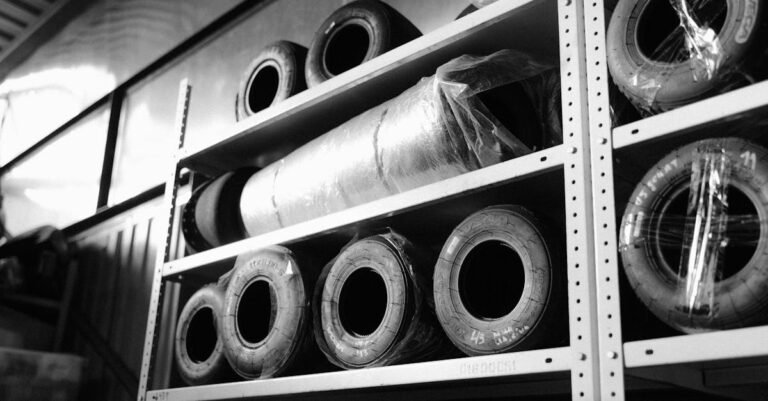Table of Contents
- The Unmissable Perks: Why Regular Car Servicing Isn’t Just an Option, It’s Essential
- Seriously, Why Bother With Regular Car Service?
- Benefit #1: Keeping You and Yours Safe on the Road
- Benefit #2: Getting More Miles and Smiles Per Gallon
- Benefit #3: Your Wallet Will Thank You Later
- Benefit #4: Giving Your Car the Gift of Longevity
- Benefit #5: Doing Your Bit for Mother Earth
- So, What Actually Happens During a Car Service? A Quick Peek
- Wrapping It Up: The Smart Choice for Your Car and Your Peace of Mind
- Frequently Asked Questions About Car Servicing
The Unmissable Perks: Why Regular Car Servicing Isn’t Just an Option, It’s Essential
Let’s talk about cars. For many of us, they’re more than just metal boxes on wheels; they’re our freedom machines, our commuting companions, our family wagons. We rely on them day in, day out. But just like any relationship, the one with your car needs a little TLC to keep it running smoothly. That’s where regular car servicing comes in. It might seem like another chore on the list, maybe even an expense you’d rather avoid. But trust me, skipping those scheduled checkups is like ignoring a small leak in your roof – eventually, it’s going to cause a much bigger, much more expensive problem. Think of regular servicing not as a cost, but as an investment – an investment in safety, reliability, performance, and even your wallet!
Seriously, Why Bother With Regular Car Service?
Okay, I get it. Life’s busy. Finding time to drop the car off, arranging alternative transport – it can feel like a hassle. You might think, “My car seems fine, why fix what isn’t broken?” That’s a common thought, but it’s a bit like saying, “I feel fine, so I’ll skip my annual health checkup.” Preventative maintenance is key! Cars are complex machines with thousands of moving parts working together, often under extreme conditions. Regular servicing allows trained eyes to spot potential issues *before* they become major failures. It’s about proactive care, not just reactive repairs. It ensures everything is lubricated, tightened, topped up, and working in harmony. Still not convinced? Let’s dive into the concrete benefits that make regular servicing an absolute no-brainer.
Benefit #1: Keeping You and Yours Safe on the Road
This one’s huge. Arguably the most crucial benefit of regular car servicing is safety. Your car carries precious cargo – you, your family, your friends. Ensuring it’s in top condition isn’t just about convenience; it’s about protecting lives. A well maintained vehicle is fundamentally a safer vehicle. Components wear out over time, fluids degrade, and adjustments drift. Servicing catches these things.
Dodging Those Dreaded Roadside Breakdowns
Picture this: you’re miles from anywhere, maybe late at night or in bad weather, and suddenly… silence. Your car sputters to a halt. Stranded. It’s inconvenient, stressful, and potentially dangerous. Regular servicing significantly reduces the risk of unexpected breakdowns. Mechanics check key components like the battery, alternator, belts, and hoses – common culprits behind roadside failures. They look for wear, leaks, corrosion, and other signs that trouble might be brewing. Catching a worn belt during a service is infinitely better than having it snap while you’re doing 70 mph on the motorway. It’s peace of mind knowing your car is less likely to let you down when you need it most.
Making Sure Your Lifesavers Are Ready: Brakes and Tires
When we talk safety, two systems immediately spring to mind: brakes and tires. These are your car’s direct connection to the road and its primary means of stopping. Neglecting them is playing with fire. Regular servicing puts these critical components under the microscope.
Beyond the Pedal: What Happens During a Brake Check?
You press the pedal, and the car stops. Simple, right? Well, there’s a lot going on behind the scenes. During a service, a mechanic doesn’t just check if the brakes *work*; they assess *how well* they work and their overall condition. This involves:
- Measuring Pad and Disc Thickness: Brake pads and discs wear down with use. If they get too thin, their stopping power is drastically reduced, and you risk damaging other components. Mechanics measure them against manufacturer specifications.
- Checking Brake Fluid: Brake fluid is hygroscopic, meaning it absorbs moisture over time. Water in the fluid lowers its boiling point, which can lead to brake fade (a terrifying loss of braking power) under heavy use. It can also cause corrosion within the brake lines and components. Fluid level and condition are checked, and replacement is recommended at specific intervals.
- Inspecting Lines and Hoses: Flexible hoses and rigid lines carry the brake fluid. They’re checked for leaks, cracks, bulges, or corrosion that could lead to a sudden loss of pressure – and braking ability.
- Examining Calipers and Cylinders: These components apply the pressure to the pads. They’re checked for leaks and smooth operation.
Think of it like a doctor checking your heart – it’s not just about whether it’s beating, but how strong and healthy it is. A thorough brake check ensures you can stop safely and effectively when you absolutely need to.
The Rubber Meets the Road: Why Tire Health is Non-Negotiable
Your tires are the only part of your car actually touching the ground. Their condition directly impacts grip, handling, braking distance, and even fuel economy. During a service, tires get a proper going-over:
- Tread Depth Check: The grooves in your tires (the tread) are essential for channeling water away and maintaining grip. Legally, tread depth must be above a certain minimum (1.6mm in the UK, for example), but performance starts to degrade well before that, especially in wet conditions. Mechanics measure the depth across the tire.
- Pressure Check and Adjustment: Underinflated or overinflated tires wear unevenly, handle poorly, increase braking distances, and can even lead to blowouts. Technicians check the pressure against the manufacturer’s recommendation (usually found on a sticker in the doorjamb) and adjust accordingly. This simple check is vital!
- Visual Inspection: They’ll look for cuts, bulges, cracking, embedded objects, and uneven wear patterns. Uneven wear can indicate problems with alignment or suspension, which can also be addressed.
- Rotation (if needed): Rotating tires (moving them to different positions on the car) helps them wear more evenly, extending their life.
Ignoring tire health is like trying to run a marathon in worn-out flip-flops – you’re setting yourself up for a fall. Regular checks ensure your tires are fit for purpose, keeping you glued to the road.
Benefit #2: Getting More Miles and Smiles Per Gallon
Who doesn’t want their car to run better and use less fuel? Regular servicing plays a direct role in optimizing your vehicle’s performance and efficiency. It keeps the engine and related systems working as the manufacturer intended.
Squeezing Every Last Drop: The Fuel Efficiency Factor
Fuel prices seem to only go one way, right? Making every litre or gallon count matters. A well-serviced car is a more fuel-efficient car. How?
- Clean Filters: Clogged air filters restrict airflow to the engine, making it work harder and use more fuel. Clogged fuel filters impede fuel flow. Replacing these filters during service keeps things breathing and flowing freely.
- Fresh Engine Oil: Clean oil lubricates engine parts, reducing friction. Old, dirty oil becomes thicker and less effective, increasing friction and forcing the engine to consume more fuel to overcome it.
- Correct Tire Pressure: As mentioned, underinflated tires increase rolling resistance, making the engine work harder and burn more fuel.
- Spark Plug Condition: Worn or dirty spark plugs lead to inefficient fuel combustion. Replacing them at recommended intervals ensures a clean burn and optimal efficiency.
- Engine Tuning Checks: Sensors monitoring the engine’s operation can sometimes drift out of specification. Servicing can identify and rectify these issues, ensuring the engine management system is optimizing the fuel-air mixture correctly.
These small adjustments and replacements add up. Regular servicing can genuinely improve your miles per gallon (MPG), saving you money at the pump week after week.
That ‘New Car Feeling’: Ensuring a Smooth, Responsive Ride
Remember how your car felt when it was new? Smooth, quiet, responsive? Regular servicing helps maintain that feeling. By ensuring everything is lubricated, adjusted, and working correctly, servicing contributes to:
- Smoother Engine Operation: Clean oil, clean filters, and properly functioning spark plugs result in a smoother, quieter running engine with less vibration.
- Better Acceleration: An engine that can breathe properly and burn fuel efficiently will respond more readily when you press the accelerator.
- Improved Handling: Checks on suspension and steering components, along with correct tire pressures, ensure the car handles predictably and feels stable on the road.
- Reliable Starting: Battery tests and checks on the starting system reduce the chances of that dreaded clicking sound when you turn the key.
It’s about keeping the whole system in tune, like a well-rehearsed orchestra rather than a collection of slightly off-key instruments. A serviced car is simply more pleasant and confidence-inspiring to drive.
Benefit #3: Your Wallet Will Thank You Later
It might seem counterintuitive – spending money on servicing to *save* money – but it’s absolutely true in the long run. Think of it as preventative healthcare for your car.
Nipping Problems in the Bud: Avoiding Wallet-Wrenching Repairs
This is where preventative maintenance really pays off. Many major car repairs don’t happen overnight; they start as small issues that gradually worsen. A regular service provides the opportunity for a trained mechanic to spot these early warning signs.
- A minor oil leak caught early might just need a new gasket (relatively cheap). Left unchecked, it could lead to low oil levels, engine seizure, and a bill for thousands.
- A slightly worn brake pad identified during service is a straightforward replacement. Letting it wear down completely can damage the brake disc, significantly increasing the repair cost.
- Noticing uneven tire wear can lead to an alignment check. Ignoring it means replacing expensive tires much sooner than necessary.
- Catching a fraying auxiliary belt before it snaps prevents potential damage to other engine components and avoids a breakdown.
The cost of a routine service is almost always significantly less than the cost of dealing with a major component failure caused by neglect. It’s the classic “stitch in time saves nine” scenario.
Thinking Ahead: Boosting Your Car’s Resale Value
Sooner or later, you’ll probably want to sell or trade in your car. When that time comes, a full service history is like gold dust. Potential buyers or dealerships see it as proof that the car has been well looked after. It indicates that the vehicle is likely to be reliable and less prone to hidden problems. A car with a documented service history, performed according to the manufacturer’s schedule, will almost always command a higher resale price than an identical car without one. That extra money you get back can often offset a significant portion, if not all, of the servicing costs incurred over the years. It makes selling easier and puts more cash back in your pocket.
Benefit #4: Giving Your Car the Gift of Longevity
Want to keep your trusty steed running for as long as possible? Regular servicing is your best bet. Cars are designed to last, but they need consistent care to reach their full potential lifespan.
Fighting Father Time: Reducing Engine and Component Wear
Every time you drive, parts within your car experience friction, heat, and stress. Regular servicing actively combats the resulting wear and tear.
- Engine Oil Changes: This is perhaps the single most important service task for engine longevity. Clean oil provides vital lubrication, reducing friction between moving parts like pistons, crankshafts, and camshafts. It also helps clean the engine and dissipate heat. Old, dirty oil loses its protective properties, leading to accelerated wear and potential engine damage.
- Fluid Checks and Changes: Coolant prevents overheating (a major engine killer), transmission fluid lubricates gears, brake fluid enables stopping, and power steering fluid assists steering. Ensuring these fluids are at the correct level and changed at recommended intervals prevents damage to critical systems.
- Filter Replacements: As mentioned, clean filters (oil, air, fuel) are crucial. The oil filter removes contaminants that can cause abrasive wear inside the engine.
- Inspections: Checking belts, hoses, suspension components, and other parts allows for replacement before they fail and cause collateral damage or excessive stress on related components.
By minimizing wear and tear through lubrication, cooling, and timely replacement of worn parts, regular servicing helps your engine and other major components last significantly longer. It’s the difference between a car that feels old and tired after 100,000 miles and one that still feels strong and reliable.
Benefit #5: Doing Your Bit for Mother Earth
Caring for your car also means caring for the environment. A well-maintained vehicle is a greener vehicle.
Breathing Easier: How Servicing Cuts Down Harmful Emissions
Your car’s exhaust emissions contain pollutants like carbon monoxide (CO), hydrocarbons (HC), and nitrogen oxides (NOx). An engine that isn’t running efficiently produces more of these harmful gases. Regular servicing helps minimize your car’s environmental impact:
- Efficient Combustion: Clean air filters, functioning spark plugs, and a properly tuned engine ensure fuel burns more completely, reducing the output of unburnt hydrocarbons and carbon monoxide.
- Emission Control System Checks: Services often include checks on components of the emission control system, such as the catalytic converter and oxygen sensors, ensuring they are working correctly to treat exhaust gases.
- Preventing Leaks: Checking for fuel or oil leaks prevents these substances from contaminating the environment.
- Optimal Fuel Economy: As we’ve seen, servicing improves fuel efficiency. Using less fuel inherently means producing fewer emissions overall.
While driving any internal combustion engine car has an environmental impact, regular servicing ensures your vehicle is running as cleanly and efficiently as possible, reducing its contribution to air pollution.
So, What Actually Happens During a Car Service? A Quick Peek
The specifics can vary depending on whether it’s an interim service, a full service, or a major service, as well as the car’s make, model, age, and mileage. However, a typical service often includes a range of checks and replacements. Think of it like a comprehensive health check. Key areas usually covered are:
- Engine Oil and Filter Change: Draining the old oil and replacing it with fresh oil of the correct grade, along with a new oil filter.
- Fluid Level Checks and Top-Ups: Checking and topping up coolant, brake fluid, power steering fluid, and windshield washer fluid. Recommendations for fluid changes based on age or condition might be made.
- Filter Checks/Replacements: Inspecting (and often replacing) the air filter and fuel filter (depending on schedule). The cabin/pollen filter might also be checked/replaced.
- Brake Check: Visual inspection of pads and discs, checking brake fluid condition and level, inspecting lines and hoses.
- Tire Check: Checking tread depth, pressures, and overall condition.
- Steering and Suspension Check: Visual inspection of components like tie rods, ball joints, shock absorbers, and springs for wear, leaks, or damage.
- Exhaust System Check: Inspecting for leaks, corrosion, or damage.
- Battery Test: Checking the battery’s health and charging system (alternator output).
- Lights Check: Ensuring all exterior lights (headlights, indicators, brake lights, etc.) are working correctly.
- Wiper Blade Check: Assessing condition and effectiveness.
- Belt and Hose Check: Inspecting auxiliary drive belts and coolant hoses for cracks, fraying, or perishing.
- General Visual Inspection: Looking underneath the car for leaks or damage, checking bodywork, etc.
- Reset Service Light: If applicable.
Your service book or manufacturer’s guidelines will detail exactly what should be done at each service interval. Always use a reputable garage that uses quality parts.
Wrapping It Up: The Smart Choice for Your Car and Your Peace of Mind
So, there you have it. Regular car servicing isn’t just about ticking a box in your maintenance schedule. It’s a fundamental aspect of responsible car ownership that delivers tangible benefits across the board. From keeping you and your loved ones safe on the road and preventing stressful breakdowns, to improving your car’s performance, boosting fuel efficiency, saving you money on costly repairs, extending the vehicle’s lifespan, increasing its resale value, and even reducing its environmental impact – the advantages are clear and compelling. Think of your car like a loyal friend; give it the regular care and attention it deserves, and it will reward you with reliable, safe, and enjoyable journeys for years to come. Don’t wait for a warning light or a strange noise – stick to your service schedule. It’s simply the smartest thing to do.
Frequently Asked Questions About Car Servicing
1. How often should I get my car serviced?
This depends heavily on your car’s make, model, age, and how you use it. Most manufacturers recommend servicing based on mileage (e.g., every 10,000 or 15,000 miles) or time (e.g., every 12 months), whichever comes first. Check your owner’s manual for the specific schedule for your vehicle. Driving conditions (lots of short trips, dusty environments) can sometimes warrant more frequent servicing.
2. Can I take my car to any garage for servicing, or does it have to be the main dealer?
Especially in places like the UK and EU, you generally have the right to take your car to an independent garage for servicing without invalidating the manufacturer’s warranty, provided they use manufacturer-approved parts (or parts of equivalent quality) and follow the manufacturer’s service schedule. Using a reputable independent garage can often be more cost-effective than a main dealer. Always keep detailed receipts and records of the service.
3. What’s the difference between an MOT (or state inspection) and a service?
An MOT (in the UK) or state inspection (in some US states) is a legally required test to ensure your vehicle meets minimum road safety and environmental standards at a specific point in time. A service, on the other hand, is preventative maintenance designed to keep your car running reliably and efficiently according to the manufacturer’s recommendations. A service involves checks, adjustments, and replacements (like oil changes) that aren’t typically part of an MOT/inspection. A car can pass its MOT but still be due (or overdue) for a service.
4. My car is quite old. Is it still worth servicing regularly?
Absolutely! Arguably, it’s even more important for older cars. As vehicles age, components naturally wear out, and the risk of breakdowns increases. Regular servicing helps catch potential failures before they happen, keeps the engine running as efficiently as possible (important as parts wear), ensures safety systems are still functioning correctly, and can significantly extend the remaining life of the vehicle. It helps maintain its reliability and safety.
5. What if the garage finds extra work that needs doing during the service?
A reputable garage should always contact you *before* carrying out any additional work that falls outside the scope of the standard service. They should explain what needs doing, why it’s necessary (e.g., safety issue, preventative measure), and provide a clear quote for the extra parts and labour. You then have the right to approve or decline the additional work. Never agree to unspecified extra costs upfront.









